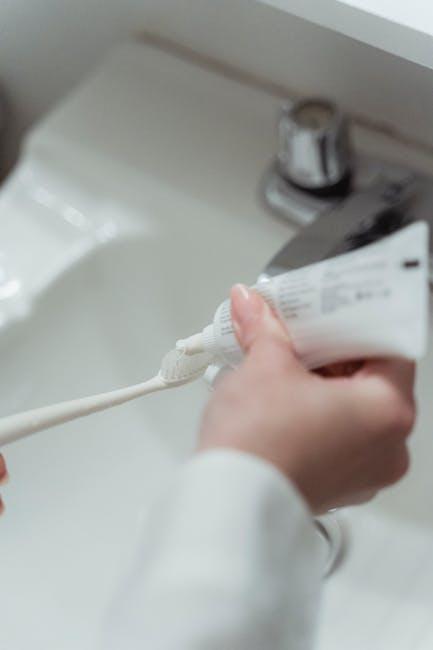Fluoride Is Essential for Kids’ Developing Teeth – University of Utah Health
Healthy, strong teeth are essential for children’s overall well-being, confidence, and development. One of the key contributors to maintaining and enhancing children’s dental health is fluoride. According to the experts at University of Utah Health, fluoride plays an indispensable role in preventing tooth decay and promoting robust tooth enamel in kids. In this article, we’ll explore why fluoride is essential for kids’ developing teeth, practical tips for parents, benefits backed by science, and more.
Why Fluoride Is Crucial for Kids’ Dental Health
Fluoride is a mineral naturally found in water, soil, and some foods. It has been widely recognized for its strong protective properties against tooth decay—especially important during the formative years when children’s teeth are developing.
How Fluoride Works
- Strengthens enamel: Fluoride integrates into the tooth enamel, making it more resistant to acid attacks from bacteria that cause cavities.
- Remineralization: Early signs of tooth decay can be reversed through fluoride’s ability to remineralize enamel.
- Antibacterial action: Fluoride reduces the harmful acid produced by bacteria in dental plaque, limiting decay.
University of Utah Health Findings
The University of Utah Health emphasizes that fluoride exposure during the early years is critical. Their research and clinical recommendations show that children who receive adequate fluoride—whether via fluoridated water, toothpaste, or professional treatments—have a significantly lower risk of developing cavities and dental complications later in life.
Key Benefits of Fluoride for Kids’ Developing Teeth
| Benefit | Description |
|---|---|
| Cavity Prevention | Significantly lowers the risk of tooth decay in kids by protecting enamel. |
| Strengthens New Teeth | Helps developing baby and permanent teeth become stronger and more resilient. |
| Improves Oral Hygiene | Enhances the effectiveness of brushing and reduces harmful bacteria growth. |
| Cost-Effective Health Measure | Reduces dental treatment costs by preventing expensive procedures due to decay. |
Practical Fluoride Tips for Parents
Ensuring children get the right amount of fluoride can be challenging without the right guidance. Here are some expert-backed practical tips from University of Utah Health dentists and hygienists.
1. Use Fluoridated Tap Water
If your local water supply is fluoridated, encourage children to drink tap water instead of bottled water that often lacks fluoride. This simple step helps maintain steady fluoride intake naturally.
2. Choose Fluoride Toothpaste
- Use a pea-sized amount of fluoride toothpaste once your child’s first tooth appears.
- For children under 3, supervise brushing to prevent swallowing excessive toothpaste.
- Start helping kids brush their teeth until they develop good motor skills (around age 6-8).
3. Schedule Professional Fluoride Treatments
Dental visits at University of Utah Health pediatric clinics often include fluoride varnish or gel applications, especially for kids at higher risk of cavities.
4. Discuss Fluoride Supplements With Your Dentist
In areas without water fluoridation, your pediatric dentist might recommend fluoride supplements tailored for your child’s needs.
Firsthand Experience: Parents Share Success Stories
Many parents who follow University of Utah Health’s fluoride guidelines report positive outcomes:
“After using fluoride toothpaste and keeping regular dental appointments, my son’s cavities disappeared and his smiles have never been brighter!” – Emily K.
“The fluoride treatments recommended by our pediatric dentist really helped prepare my toddler’s new teeth to be strong and healthy.” – Jason L.
Important Considerations and Safety
While fluoride is safe and effective when used properly, it is important to understand recommended dosage and usage, especially for young children.
- Fluorosis awareness: Excessive fluoride during early childhood can cause dental fluorosis (white spots on teeth). This is avoided by using appropriate toothpaste amounts and professional guidance.
- Supervision: Always supervise young children’s brushing to prevent swallowing large amounts of fluoride toothpaste.
- Consult your dentist: For personalized fluoride plans based on your child’s health and risk factors, always consult your pediatric dentist or healthcare provider.
University of Utah Health’s Commitment to Children’s Dental Wellness
University of Utah Health continuously advocates for scientifically proven preventive care methods like fluoride application to protect and nurture children’s oral health. Their ongoing research supports the safe use of fluoride as a cornerstone in pediatric dentistry to build a lifetime of healthy smiles.
Summary Table: Fluoride Facts for Kids’ Teeth
| Fluoride Role | Protect enamel, prevent decay, and support tooth development |
| Application Methods | Water fluoridation, toothpaste, mouth rinses, professional treatments |
| Recommended Amount | Pea-size toothpaste; follow dentist’s advice on supplements |
| When to Start | As soon as first tooth appears (about 6 months) |
Final Thoughts: Protecting Your Child’s Smile With Fluoride
Fluoride is an essential ally in the fight against tooth decay and a proven guardian for children’s developing teeth. By incorporating fluoride into daily dental routines—as recommended by University of Utah Health—and combining it with good oral hygiene and regular dental visits, parents can ensure their children enjoy strong, healthy teeth now and in the future.
Empower your family’s dental health today by trusting fluoride’s science-backed benefits, making it a cornerstone of your child’s oral care regimen!


